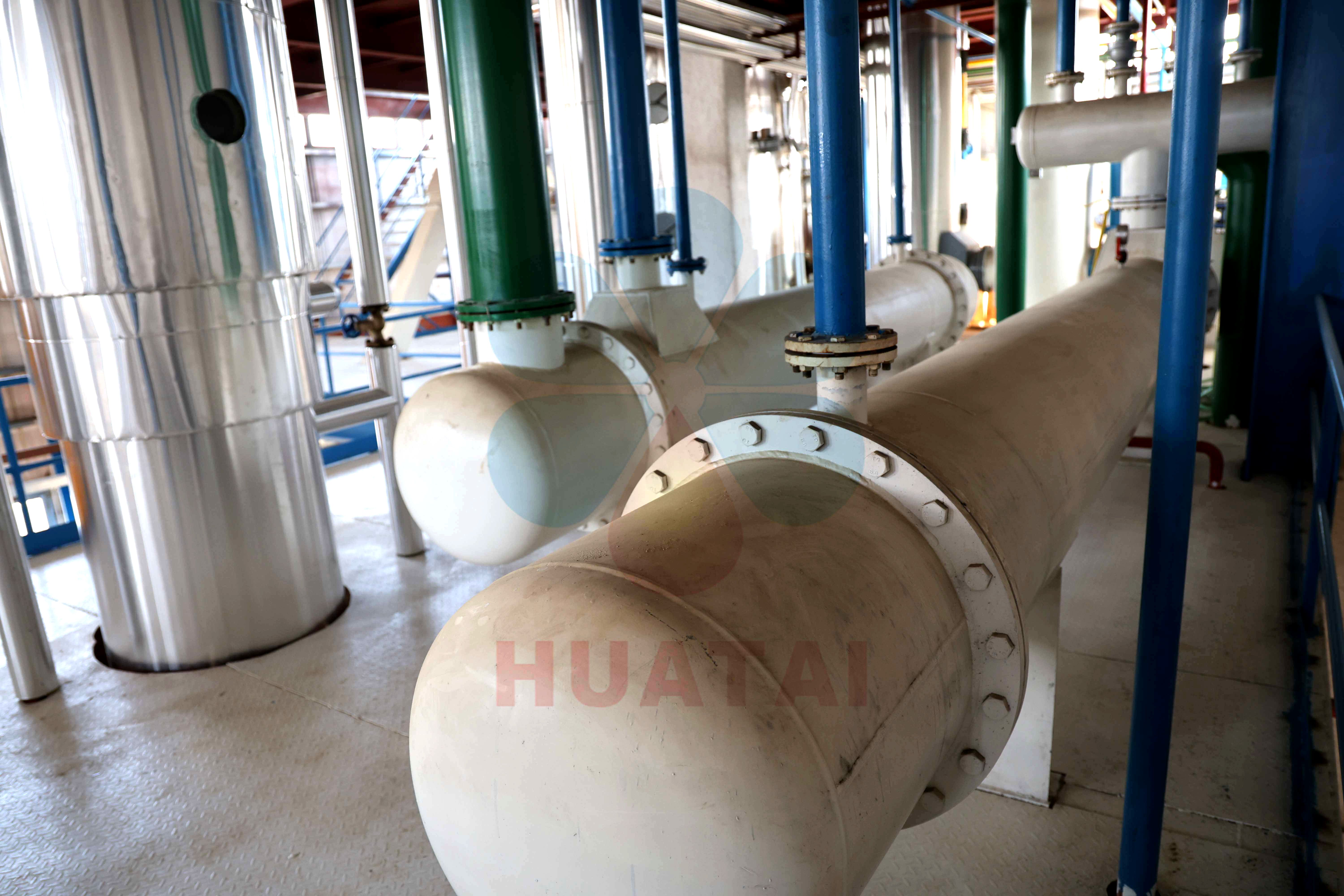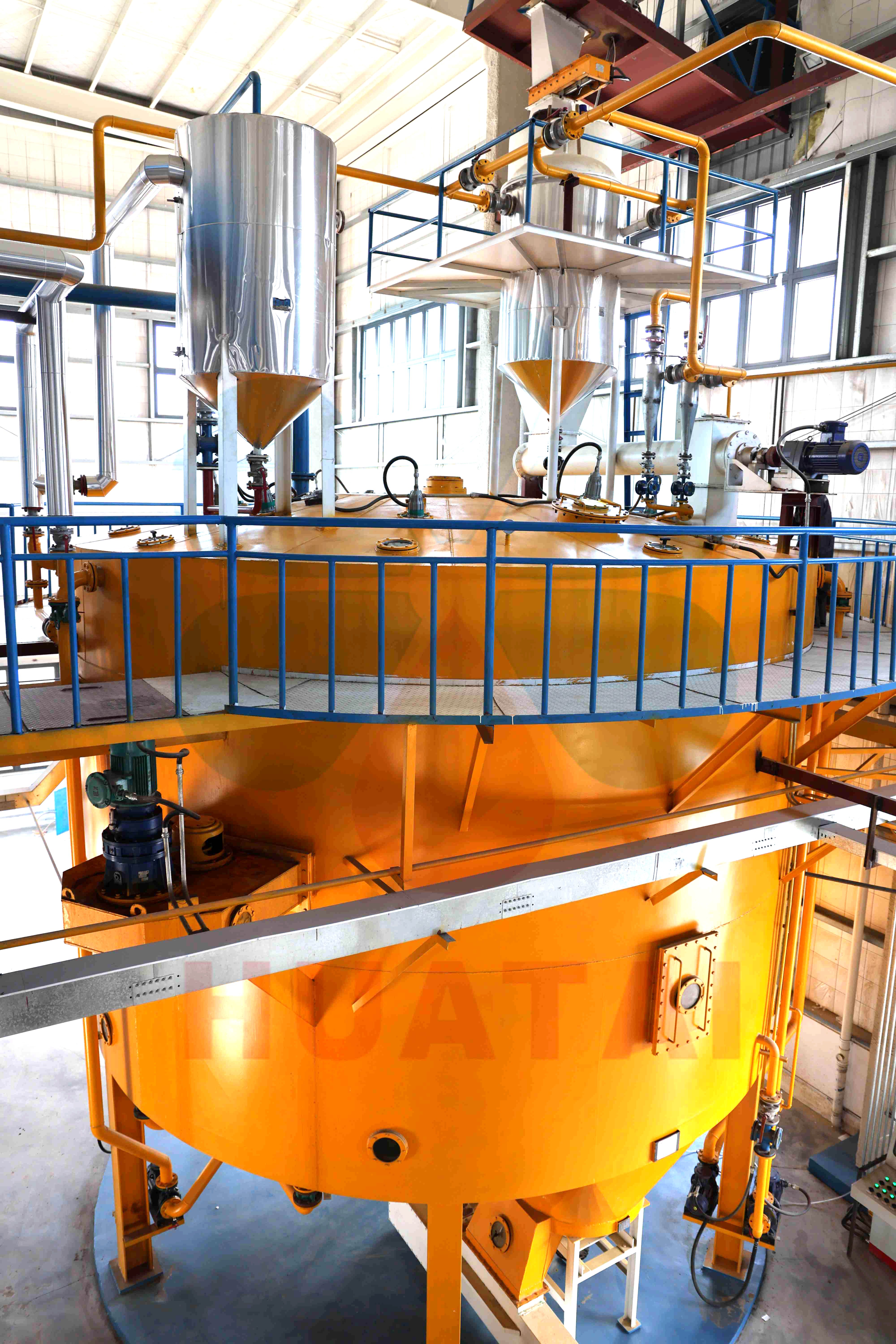The solvent extraction method for oil production is based on the principle of solid-liquid extraction. It utilizes an organic solvent that can dissolve oil, allowing oil to be extracted from oilseeds through spraying and soaking. This is the most efficient method for oil extraction, achieving the highest oil recovery rate.
Compared to other oil extraction methods, solvent extraction has several advantages:
The oil yield is higher than other methods, with residual oil in the meal below 1%.
The extracted meal retains a high protein content, making it a suitable raw material for livestock and animal feed.
Lower processing costs, as the method does not involve mechanical extraction, and scaling up production further reduces costs.
Easier automation of the production process.

Better production environment due to a closed system with no leaks, dust, or high temperatures.
High-quality crude oil since organic solvents selectively dissolve oil while effectively controlling non-lipid impurities.
The basic process of solvent extraction involves preliminary treatment of the oilseeds, followed by immersion in an organic solvent to extract the oil. The liquid part obtained is called miscella. The miscella undergoes evaporation and distillation to yield crude oil, while the remaining solid material, known as wet meal, is subjected to desolventizing, drying, and cooling to produce the final meal product. Solvent vapors from miscella evaporation and meal drying are condensed and cooled for recovery, allowing the recycled solvent to be reused. The solvent extraction process is completed in four steps: oilseed extraction, miscella evaporation, wet meal desolventizing, and solvent recovery.

Since solvents are essential industrial additives throughout the extraction process, their composition and properties significantly impact technical parameters and product quality. Factors such as the solubility of oil in the solvent, separation of solvent from oil, separation from oilseeds and water, production safety, and the dissolution of lipid-soluble compounds all depend on the solvent’s characteristics. Therefore, the chosen solvent must meet technical and process requirements for effective oil extraction.
Generally, the requirements for solvents used in oil extraction mainly consist of two key aspects: first, achieving the highest possible oil yield during the extraction process; second, obtaining high-quality oil and meal after extraction. Additional requirements include minimizing any potential harm to human health caused by the solvent and ensuring the safety of production operations.
Huatai Oil Machinery provides good quality oil mill plant, time & fast delivery, perfect after-sale services, and reasonable price, contact us!
Website: https://www.huataioilmachine.com/Copyright @ Henan Huatai Cereals And Oils Machinery Co.,Ltd.
Contact us now